
The Miami-Dade Fire Rescue (MDFR) Air Rescue Bureau has four Bell 412 EPs that are used for fighting wildland fires in south Florida as well as providing regional aero-medical transport, search and rescue, and tactical support to MDFR operations. Jim Hunter, an Aircraft Commander, said about 80 percent of their responses are for medical aids, with the remainder being rescue and firefighting support.
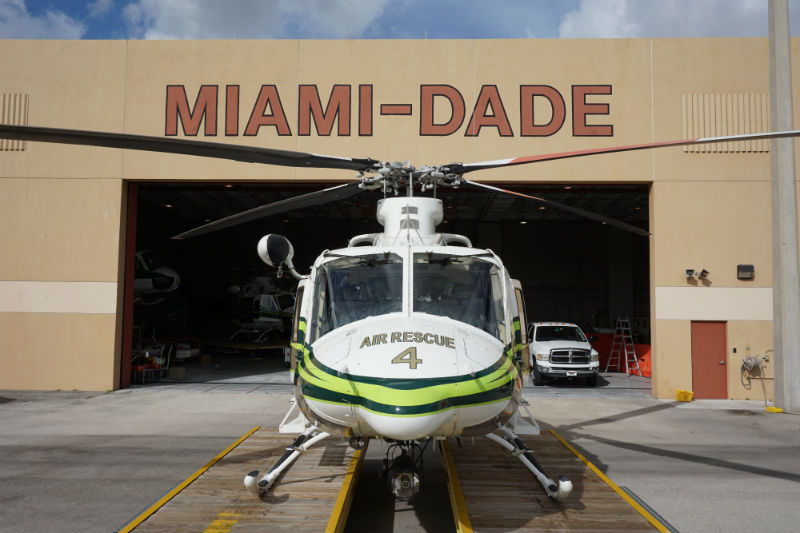
The Bureau operates out of two facilities in south Florida, the Tamiami Executive Airport and the Opa-locka Airport. Maintenance, administration, and training is conducted at the Tamiami facility.
There is always an “alert aircraft” helicopter staffed 24/7 at each location, along with two pilots and two paramedics for each. The other two helicopters are used for backup when an aircraft is down for maintenance. The day we were there, a backup ship was ready to be wheeled out on a dolly to the ramp if needed, and the fourth was undergoing heavy maintenance, which included removing the engines, rotors, and many other components.
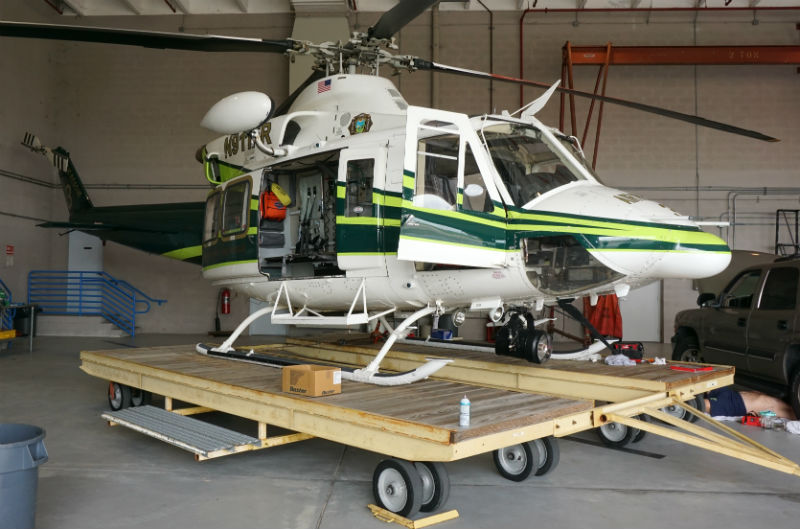
During the dry season, January or February through May, the helicopters are equipped with a 350-gallon Simplex belly tank for firefighting, which takes about an hour to install, Mr. Hunter said. The tank has three doors which can be opened independently or all at the same time depending on the need. While the helicopter is hovering, the tank is filled through a snorkle with a 5 gallon per second pump powered by an electric motor.
They also have a 240-gallon Bambi Bucket.

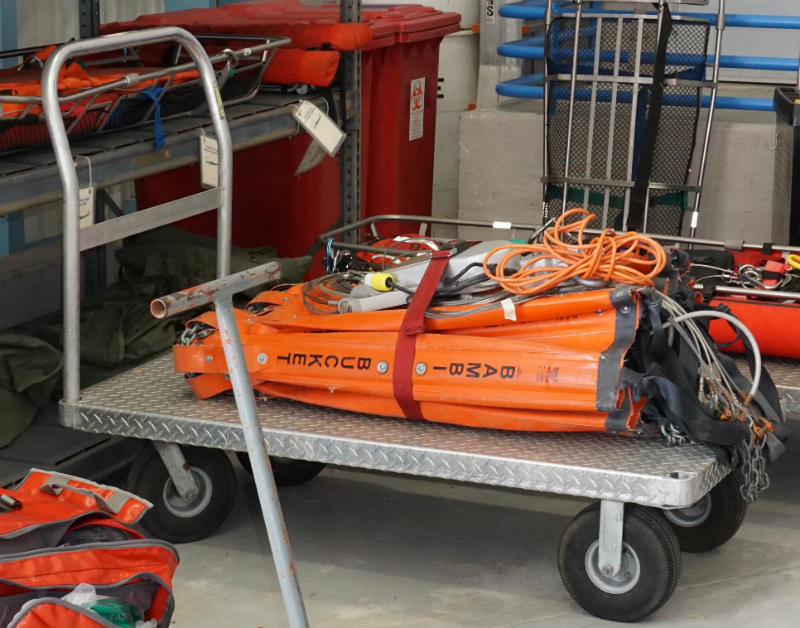
Each aircraft is equipped with the following:
- Patient loading systems normally configured allow the transport of two critical-care patients, with the option to reconfigure for up to six patients in Mass Casualty Incidents (MCIs).
- An external hoist for helicopter-borne rescues.
- An external high-power searchlight, “The Night Sun,” is used for night operations.
- MCI Command and Control suitable radio suite.
- Night Vision Goggle compatible lighting.
They are also equipped with weather radar, but Mr. Hunter said the pilots prefer to use an iPad connected to the Internet, since it can show troublesome weather at a longer range than their radar.
(More photos are below.)
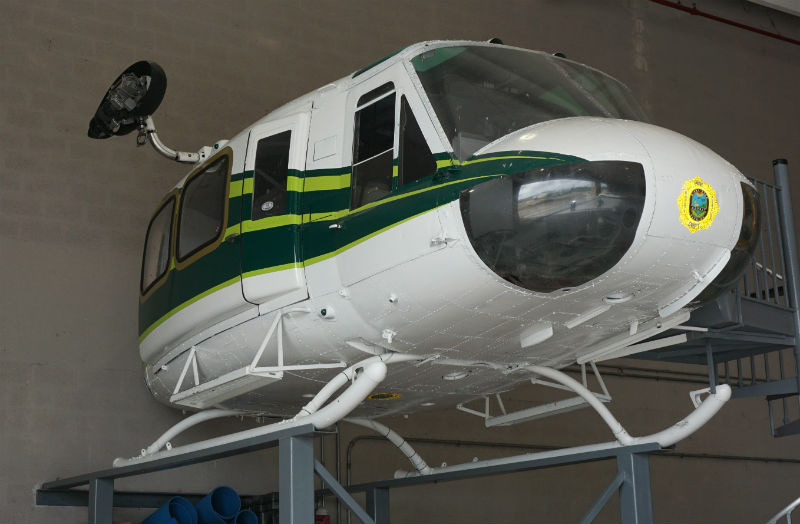
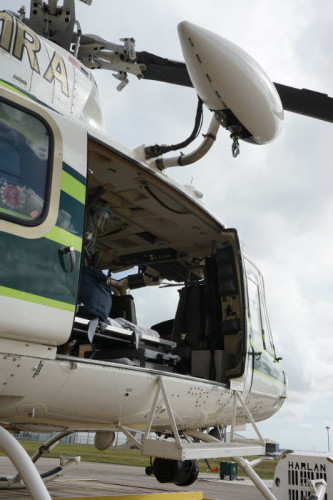
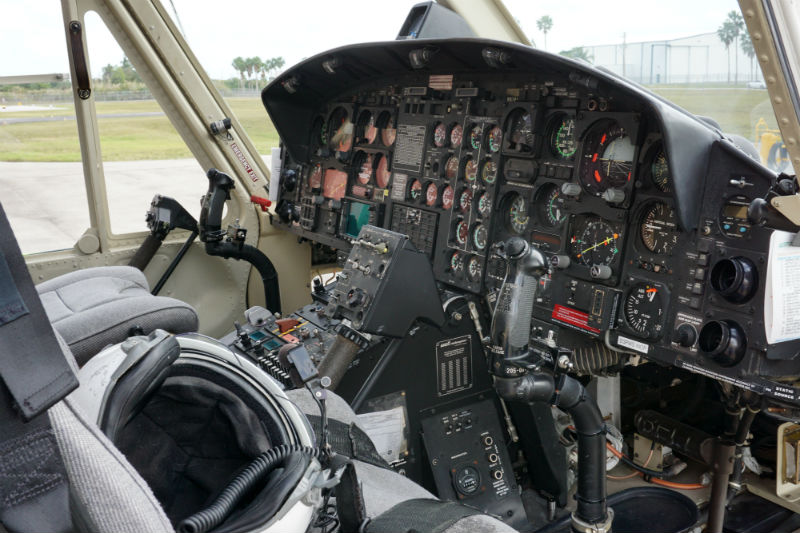

On a side note to this story when Air Rescue was first started 25 plus years ago Everglades N.P. aviation people were asked to help out. I was lucky to be among them and watched the operation grow in size and skill to what they are now, a very first rate 24/7 public service. Good joint training with them in both land based and marine SAR along with then annual training in medical and operational training. One example is patient litter hoist lifts off moving small boats, a very detailed and complex team operation requiring perfect coordination. I lost count long ago on the number of missions they flew in the south Florida National parks but they saved the lives of many people including some very high risk ones. Several Park Rangers with severe injuries or medical conditions were transported by them. A couple of the original pilots were former park contract pilots and we had a very close, trusting relation ship with them. Having worked shifts with them for EMT hours I was always impressed on their very high level of professional skill and safety awareness.
Thanks for this very accurate and interesting story.
Bill,
When you are in LA, check out the City, County and the African American Firefighters museums:
http://www.lafdmuseum.org/
http://www.lacountyfiremuseum.com/
http://www.aaffmuseum.org/
Bill if you need help getting the door open I should be able to help.
760-631-4329
“80% of their responses are for medical aid…” Sounds like most structural fire departments. I wonder how Miami Dade successfully receives the budget approval for TWO backup helicopters in a four-machine fleet? You just don’t see that in the private sector.
Thanks Bill very interesting..
Have you ever visited LA County helicopter operations??
I have seen several clips on LAC in the past but not one similar to Miami Dade.
Thanks for your work I enjoy every post.
JP Harris ret. LAC
Thanks JP. LA County’s helicopter operations is on my list of places to check out.